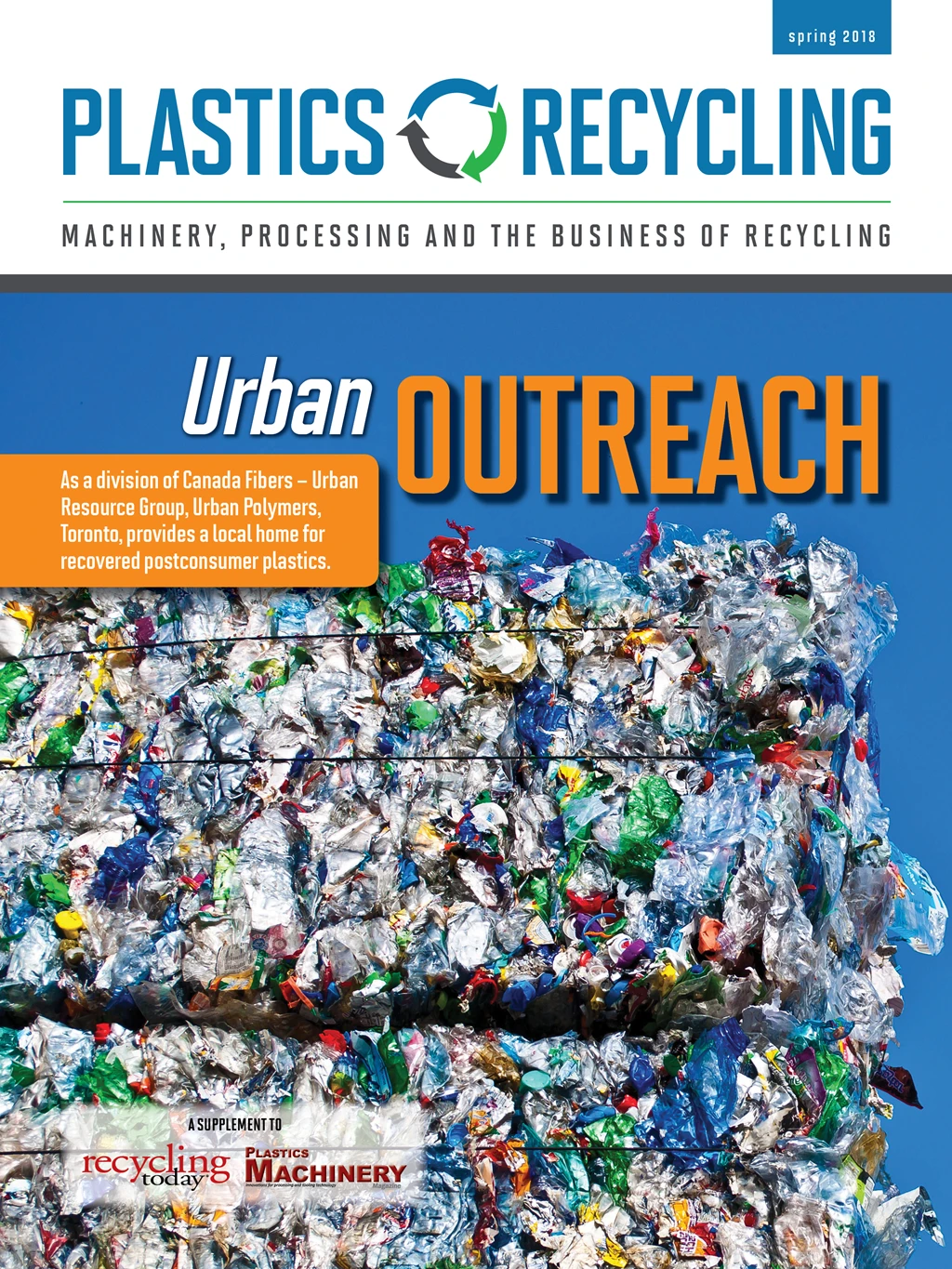An agglomeration system and other technologies patented by an Estonian company take on the challenge of recycling unidentified, dirty, unsorted plastics outdoors in warm and cold climates. They target plastics and products, such as garden furniture, computer and TV shells and bags, that often wind up either burned or buried in landfills.
Originally covered by a European patent, the line invented by Rolan Investment OÜ, Tallinn, Estonia, performs the preliminary processing of mixed plastic scrap, including materials made of polypropylene (PP), high-density polyethylene (HDPE) and polyethylene terephthalate (PET). First, the mixed material is conveyed past a magnet and air separator to remove metal and nonplastic contaminants; after that, it’s compacted and crushed.
The next task—homogenizing the dirty, unsorted plastics—is the work of a specially designed agglomerator. “Unlike the recycling of clean, sorted and identified plastic waste, the agglomeration process used for recycling unclean mixed plastic waste involves significantly stronger forces, higher temperatures and more wear and tear,” the patent states.
The agglomerator crushes, chops and heats the material to between 284 F and 320 F. In one aspect of the invention, the agglomerator can handle a range of up to 330-plus pounds in a cycle time of five to 15 minutes. The material is then cooled rapidly to 212 F or cooler.
Several features, including the use of double walls in the working zone of the blade system and closed bearings and seals, allow Rolan’s agglomerator to withstand stronger vibrations than similar systems designed for single-stream plastics. Using a frostproof coolant system and associated lubrication system that applies different oil grades depending on outside temperatures, the system can operate in extreme heat and below-zero temperatures.
The system’s cutting design also reflects the challenges of processing mixed plastics. “The blades used by the solution, according to the present invention, allow the production of an agglomerate of suitable properties and fragment size, with its density and fluidity suitable for manufacturing new plastic products from the mixed plastic waste,” the patent states.

The process results in homogenized plastic fragments measuring about 3 millimeters to 10 millimeters, with a moisture content of less than 1 percent.
Patent 9,815,225; issued Nov. 14, 2017
Sorting. Unisensor Sensorsysteme GmbH, Karlsruhe, Germany, has applied for a patent for an invention it claims will more accurately and quickly identify chemically similar plastics. It uses a light source of at least one wavelength to irradiate a plastic sample; a second device detects at least part of the light re-emitted by the sample. By analyzing the amount of time it takes for the light to be re-emitted,
The method, using software from PicoQuant, Berlin, can identify plastic materials and additives, such as flame retardants. Light sources can include gas-discharge lamps or flash lamps, preferably with hydrogen-containing gas fillings or semiconductor lasers.
Patent application 20170259305; published Sept. 14, 2017
Filtration. A proposed filtering device for removing dirt particles from plastic melt uses a bellows cylinder to apply a targeted force on the scrapers to clean the filter. According to the patent application filed by Nordson Corp., Westlake, Ohio, the cleaning unit of the device includes a pressure source that controls one or more bellows cylinders attached to one or more scrapers. “This ensures that the scraper members exert a uniform pressing force against the surface of the filter element,” the application states.
Patent application 20180008911; published Jan. 11, 2018
Filtration. Ettlinger Kunststoffmaschinen GmbH, Königsbrunn, Germany, has invented a continuous filter for removing contaminants from
Designed for filtering mixtures with relatively low levels of contamination, the device includes at least one wiper that pushes contaminants captured by a filter into a discharge unit. One or more pistons in the discharge unit carry the contaminants further from the filter. To achieve optimal filtration, the carrier shaft, which rotates the filter, and the pistons are controlled independently, at varying speeds.
Patent 9,815,006 issued Nov. 14, 2017
Get curated news on YOUR industry.
Enter your email to receive our newsletters.
Explore the May 2018 Plastics Recycling Issue
Check out more from this issue and find your next story to read.
Latest from Recycling Today
- MTM Critical Metals secures supply agreement with Dynamic Lifecycle Innovations
- McClung-Logan Equipment Company joins Tana’s authorized dealer network
- Grede to close Alabama foundry
- Plastics Recycling Conference 2025: Working toward their targets
- SWACO rolls out new commercial recycling and food waste programming
- Updated: Matalco to close Canton, Ohio, plant
- Metso launches electric Anode Weighing and Casting Machine
- Circular by Shapiro releases '5 for Five' sustainability series






